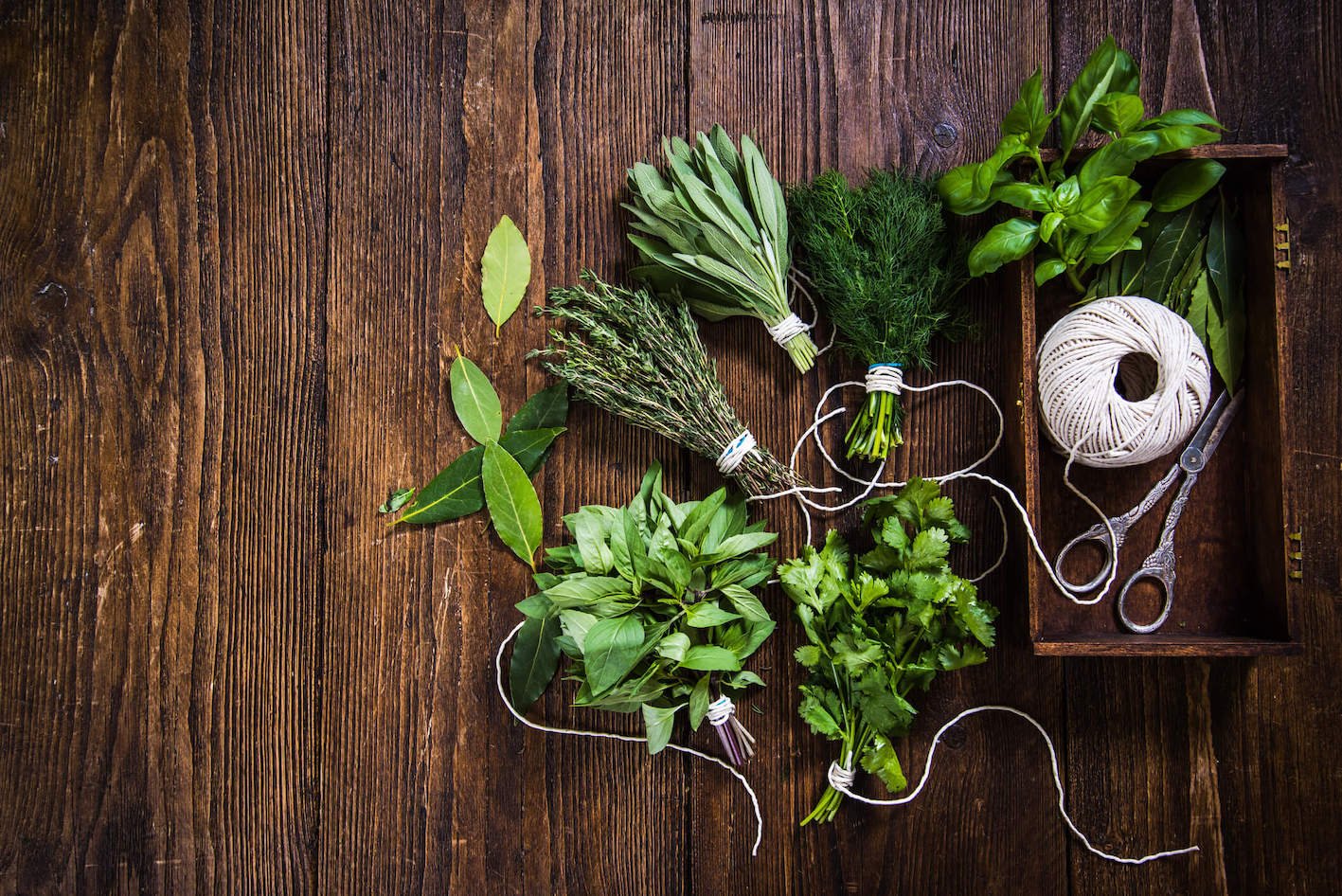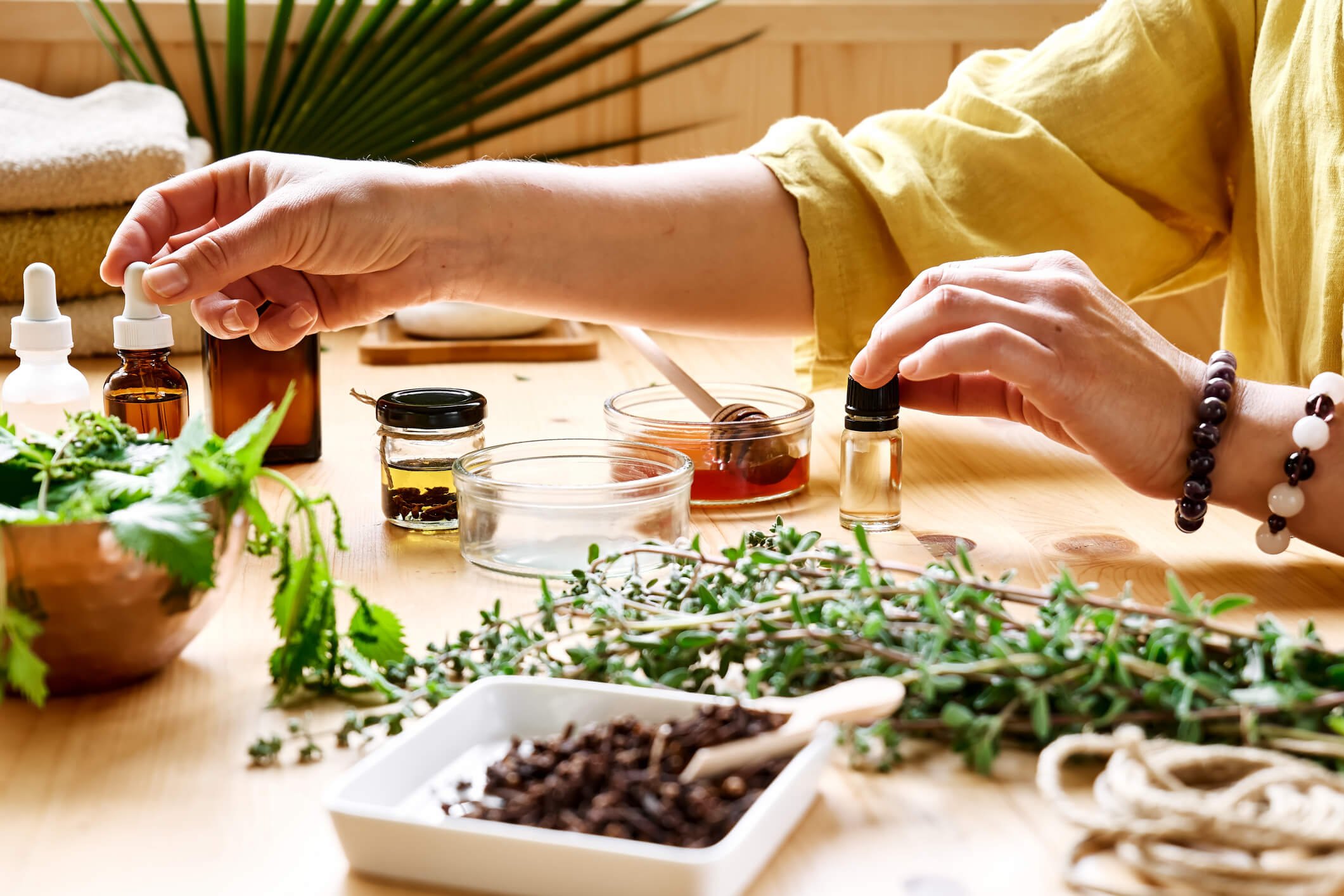Spice Up Your Fall Dishes with Texas Culinary Herbs for Cooking
Discover > Texas Home Cooking > Spice Up Your Fall Dishes with Texas Culinary Herbs for Cooking
As the weather cools down in Texas, produce availability also goes down, but the number of culinary herbs increases! The number of Texas culinary herbs can vary from region to region in Texas due to the varying climate, but some of the more common fresh herbs (how long do fresh herbs last?) during the fall season include rosemary, oregano, sage, lemon balm, and thyme.
If these herbs all sound familiar is because these are the common herbs for the season and they flavor many holiday dishes. This is why many Thanksgiving and holiday recipes call for these herbs, not because of their taste, but because these herbs were the ones that were available when these dishes first came into being.
Each herb has its own unique flavor that can enhance the taste of your food.
Before we dive deeper, let's ask the question on everyone's minds...
What Is The Difference Between Herbs and Spices?
Herbs and spices are both seasonings that can be used to flavor food. The difference between them is that herbs are the leaves of a plant, while spices are the dried seeds, fruits, or bark of a plant. Herbs are generally used fresh, while spices can be used either fresh or dried.
They're not mutually exclusive as they're both used to add flavor during the cooking process. In fact, some herbs and spices even come from the same plant! A good example of this is cilantro and coriander! Cilantro comes from the leaves of the Coriandrum sativum plant while coriander is actually the seeds of the same plant!
What are Culinary Herbs?
Culinary herbs enhance a dish by adding flavor and texture to it. Many herbs are used for food or as medicine and are produced by plants that have leaves as herbs and also for seeds as spices.
Both chefs and home cooks use both fresh and dried herbs (how long do dried herbs last?) for both sweet and spicy dishes (What wine goes well with spicy dishes?) that vary between rich sauces, light salads, and herb-filled baked products.
Fresh Herbs Versus Dry Herbs
When it comes to cooking, there are two main types of herbs you can use: fresh or dry. Fresh herbs are just that: fresh. They haven't been dried and usually need to be used within a few days of picking since they don't last as long as dried herbs.
Dried herbs, on the other hand, have been dried and usually last for a few months to a year. Drying herbs helps to preserve them and intensifies their flavor.
So, which is better? Well, that depends on your needs. If you're looking for a strong flavor, then go with dried herbs. If you want a more subtle flavor, go with fresh herbs. And if you're in a pinch and only have dried herbs on hand, you can reconstitute them by soaking them in hot or water for about 10 minutes, BUT this will not be as "fresh" tasting, but better with than without right?
How to Clean Fresh Herbs
When you get your fresh herbs, the first thing you need to do is give them a good wash. This will remove any dirt or debris that may be on them. To do this, fill a bowl with cold water and add the herbs. Swish them around a bit to dislodge any dirt or debris, then drain the water and repeat until the water is clear.
If you're going to cook with them, it's important to clean them first so that they don't add any unwanted flavors or textures to your dish. If you're using them raw/fresh then a quick wash and a ride in a salad spinner is going to do wonders!
While many chefs say to not wash them, it's always best to do so as you don't know what has been sprayed on them unless you know where it was grown or who grew it.
How to Store Fresh Herbs
If you're not going to use your fresh herbs right away, you need to store them properly so they stay fresh. One way to do this is to place them in a plastic bag and seal it shut. You can then store the herbs in the fridge or in a cold environment.
Another way to store fresh herbs is by freezing them. To do this, chop the herbs into small pieces and place them in a freezer-safe container. Once they're frozen, you can remove them and store them in the freezer until you need them.
Both of these methods will help keep your herbs fresh for a few days or weeks.
Benefits of Using Culinary Herbs
Aside from just adding flavor to your dishes, herbs have some health benefits as well. Many herbs contain anti-inflammatory properties and are high in antioxidants, which can help boost your immune system and overall health. Plus, they're a great way to add some extra nutrition to your meals without adding calories or extra salt.
So, don't be afraid to experiment with different herbs in your cooking, and try incorporating some Texas-grown culinary herbs into your fall dishes for a flavor boost! Happy cooking!
Common Texas Culinary Herbs for Your Herb Garden
Basil
Basil is a delicious and versatile herb that can be used in both sweet and savory dishes. It has a sweet, peppery flavor and is often used in Italian cuisine.
Basil is also high in antioxidants and anti-inflammatory properties, making it a healthy addition to your meals.
Basil is a great herb to grow in your garden, as it thrives in warm weather and can be grown year-round. It's also easy to grow, so it's a good herb for beginners. If you're looking to add some fresh basil to your dishes, simply pluck the leaves from the stem and add them to your food. You can also use a mortar and pestle to crush the leaves for extra flavor. Enjoy!
Rosemary
If you're looking for an herb with a robust flavor, then rosemary is the herb for you! This herb has a strong, piney flavor that can add intensity to your dishes.
This herb thrives in warm weather and can be grown year-round in Texas. It's also easy to grow, making it a good herb for beginners. To use rosemary in your cooking, simply pluck the leaves from the stem and add them to your food. You can also use a mortar and pestle to crush the leaves for extra flavor. Enjoy!
Oregano
Oregano is a flavorful herb that is often used in Mediterranean cuisine. It has a strong, pungent flavor and is a great addition to dishes like pasta (how long does pasta last?), pizza, and chicken.
Oregano is a perennial herb that can be grown year-round in Texas but be sure to make the most of your plant! If they're potted, bring them in for winter.
Sage
Sage is a plant that has been used for centuries in traditional medicine. It is believed to have a variety of medicinal properties, including being a natural anti-inflammatory and analgesic.
Sage is also thought to be beneficial for the brain and may help improve cognitive function and memory. And of course, it's mighty tasty!
Parsley
Parsley is a popular herb that is used in many dishes.
It has a slightly peppery taste and is a great addition to salads, pasta dishes, and soups. Parsley is also a good source of vitamins A and C.
Lemon Grass
Lemon grass is a fragrant herb that is often used in Thai cuisine. It has a lemony flavor and a slightly spicy aftertaste. Lemon grass is can be used fresh or dried.
Fresh lemon grass is more flavorful, but dried lemon grass is more convenient to use. So if you have extra lemon grass, dry them and save them for holiday roasts!
Scented Geranium
Scented geraniums have a sweet, floral flavor that can be added to desserts, drinks, and savory dishes. They are a great way to add a touch of sweetness and flavor to your food.
Scented geraniums are easy to grow and come in a variety of colors, so they are a great herb to add to your garden. They also make a pretty addition to any room in your home. Enjoy!
Bay Laurel
Bay laurel leaves have a strong, spicy, bitter, and aromatic taste that is unique and not easily forgotten.
The taste has been described as being similar to oregano, thyme, mint, and even curry. Bay laurel is a popular herb in cooking and is used in many dishes to add flavor.
Make Your Own Herbal Tea
Making your own herbal tea is a great way to enjoy the flavor of your favorite herbs. It's also a great way to get the benefits of those herbs. Herbal tea can be made with fresh or dried herbs, and it's easy to make.
To make herbal tea, you'll need water, herbs, and a pot to cook the tea in. You can use any type of pot, but a stainless steel or enameled pot is best. Bring the water to a boil and then add the herbs. Reduce the heat and let the tea simmer for about 10 minutes. Strain the tea and enjoy!
Health Benefits of Herbs
Herbs have been used for centuries for their medicinal properties. Many herbs have anti-inflammatory, analgesic, and antioxidant properties. They are also a good source of vitamins and minerals.
Some of the most popular herbs used for their health benefits include ginger, garlic, turmeric, lavender, and chamomile. These herbs can be used fresh or dried, and they can be added to food or made into tea.
How to Use Culinary Herbs
Some common flavors associated with herbs include mint, thyme, and basil. These flavors can be enjoyed both in food and in drink. For example, a simple mojito with fresh mint leaves is a refreshing way to enjoy the flavor of mint. Similarly, basil can be used to flavor homemade pesto or added to a tomato sauce. Thyme is often used in chicken dishes or in soups.
Herbs can also be used for medicinal purposes. Many herbs have anti-inflammatory properties and can be made into teas or tinctures to help with various ailments. Some examples of commonly used medicinal herbs include chamomile, ginger, and turmeric.
In addition to their flavorful and medicinal qualities, herbs can also add beauty to a garden or outdoor space. Many herbs have attractive foliage and can be used in landscaping or as ornamental plants.
It is important to note that some herbs, particularly those used for medicinal purposes, can have potential side effects and interactions with certain medications. It is always advisable to consult with a doctor or healthcare professional before using herbs for medicinal purposes.
When fall is over but you want to continue enjoying the flavors of your favorite herbs, try starting your own winter herb garden. Learn more about it here.
Looking for more information to cooking steakhouse quality steaks? Click here.
















